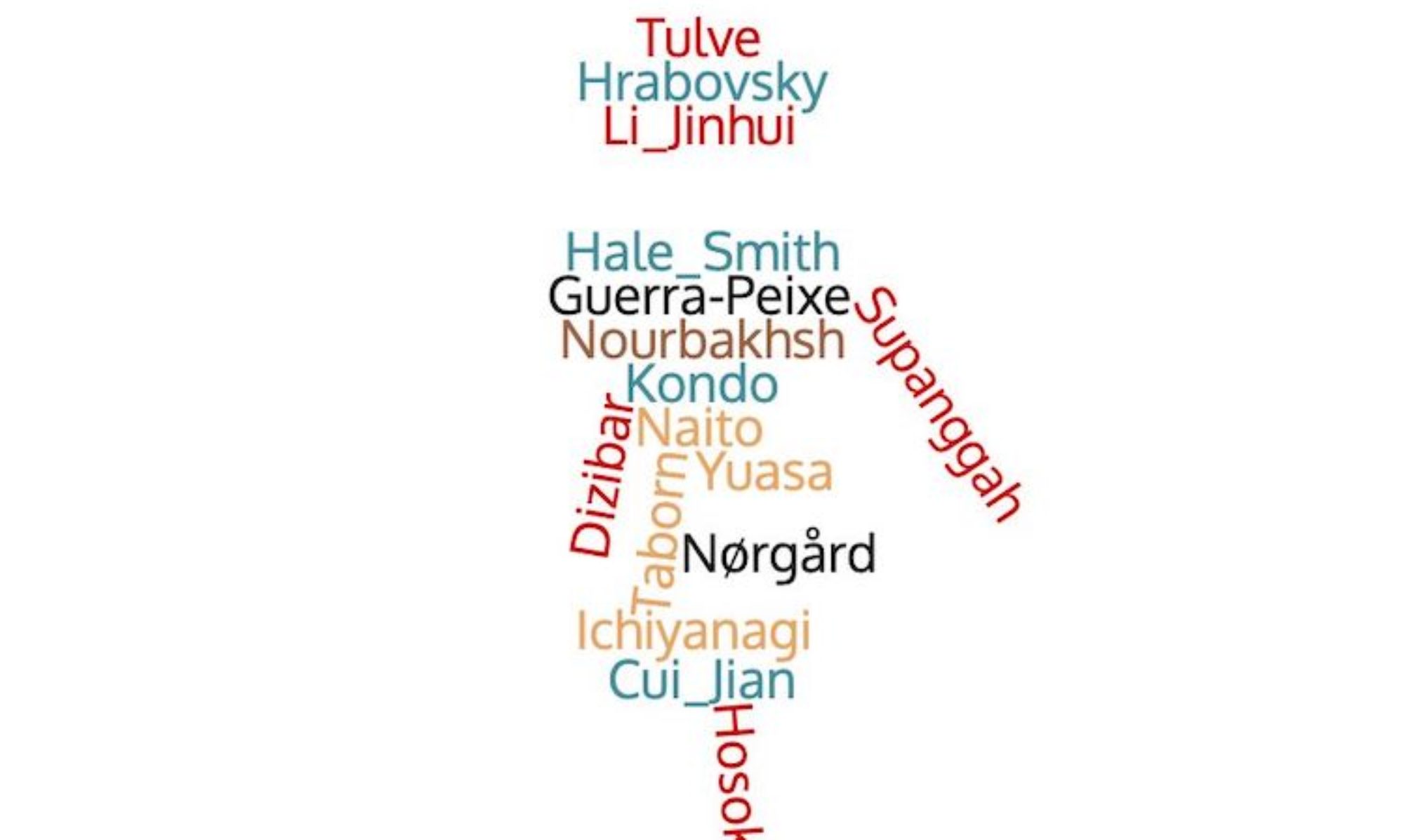By Mao Mengdan and Min Lingkang
This post is part of a series on 100 modern conservatory-trained Chinese composers from 1912 onwards who wrote symphonic, ensemble, and solo instrumental music using Western instruments, as well as choral and solo vocal music, adopting Western tonality or avant-garde techniques. They are regarded as key historical figures in and drivers of modern Chinese music history.
Xian Xinghai (June 13, 1905 – October 30, 1945) was a renowned Chinese composer and pianist, often referred to as the “People’s Musician.” He was born in Macau and has ancestral roots in Panyu, Guangdong (now part of Nansha District, Guangzhou). From 1926 to 1934, he studied music at Peking University’s Music Transmission Institute, the Shanghai National Conservatory of Music, and the advanced composition class at the Conservatoire de Paris.
Upon returning to China in 1935, Xian devoted himself to composing songs for the war effort and music for progressive films such as “Soaring Aspirations” and “Youth March,” as well as for plays like “Resurrection” and “Thunderstorm.” He also established a music training class at the Lixin Accounting School (now Shanghai Lixin University of Accounting and Finance) with the invitation of renowned educators Pan Xulun and others, nurturing a generation of musicians including Mai Xin, Meng Bo, Yang Zuoming, Zou Bozong, and Lu Jianguang, thereby making an indelible contribution to the development of music during the Anti-Japanese War of Resistance period, known in Chinese as kangri zhanzheng 抗日战争 (when Japan controlled Northeast China and later mounted attacks across the country).
In the winter of 1938, Xian left a well-paying job to go to Yan’an, where he served as the head of the music department at the Lu Xun Academy of Arts and also taught at the Women’s University of Yan’an. During his year and a half in Yan’an, he reached the peak of his creative career, composing works such as “March of the Army and People,” “Great Chorus of the Production Movement,” “Yellow River Cantata,” and “September 18th Cantata.”
On May 11, 1939, Xian conducted the premiere of the “Yellow River Cantata” at a celebration in Yan’an marking the anniversary of the establishment of the Lu Xun Academy of Arts. In June of the same year, he joined the Communist Party of China. In May 1940, he went to the Soviet Union to work on post-production and music for the documentary “Yan’an and the Eighth Route Army.”
By June 22, 1941, he had completed several major works, including the “Symphony of National Liberation” (“First Symphony”), “The Sacred War” (“Second Symphony”), the orchestral suite “Man Jiang Hong,” the symphonic poem “Amangeldy,” and solo songs based on ancient Chinese poetry.
In early 1945, shortly after being hospitalized, Xian began composing the orchestral work “Chinese Rhapsody.” However, due to exhaustion and malnutrition, his lung condition worsened, and he passed away in Moscow on October 30, 1945.
The “Yellow River Cantata,” composed in 1939 in Yan’an, is one of Xian Xinghai’s most famous works. With lyrics by Guang Weiran and music by Xian, the cantata celebrates the indomitable spirit of the Chinese people in their struggle against Japanese aggression, depicting the war and the immense suffering of the people. The cantata consists of eight movements: “Prelude” (orchestral), “Song of the Boatmen of the Yellow River” (mixed chorus), “Ode to the Yellow River” (male solo), “The Yellow River in Wrath” (spoken chorus), “Lament of the Yellow River” (female chorus), “Dialogue on the Banks of the Yellow River” (duet and round), “Lament of the Yellow River” (female solo), “Defend the Yellow River” (unison and round), and “Roar, Yellow River!” (mixed chorus).
Each movement can stand independently, and there is a significant contrast in content, vocal style, and musical style between them, creating a vivid contrast during the performance. The entire work revolves around the core theme of the Chinese nation’s struggle for survival during the Anti-Japanese War of Resistance, with a few basic motifs running through the entire piece, symbolizing the unyielding spirit of the Chinese people.
Xian Xinghai’s use of flexible vocal and sound textures, as well as the incorporation of national music styles into the musical form, demonstrate his strong nationalist music style. Each movement of the “Yellow River Cantata” portrays different characters, such as the Yellow River, waves, boatmen, and women, with great expressiveness.
The cantata blends recitation with music. The recitations between movements not only provide smooth transitions but also ensure that the entire work is tightly focused on the theme of defending the Yellow River and the motherland.
You can watch a performance of Xian Xinghai’s “Yellow River Cantata” at the following link: https://www.bilibili.com/video/BV1GN411R7id?share_source=copy_web
